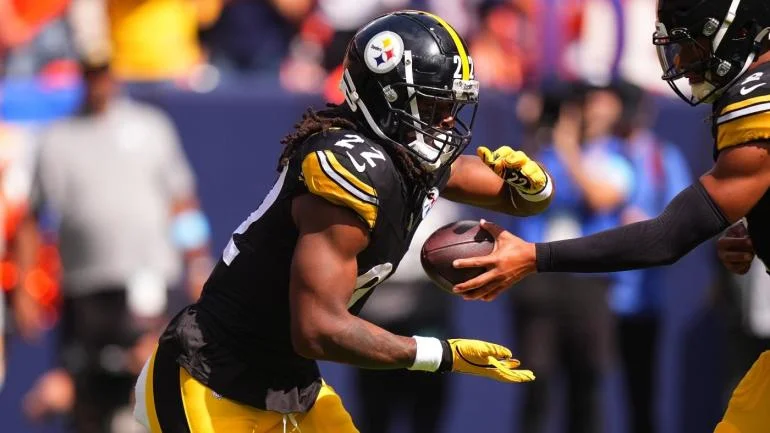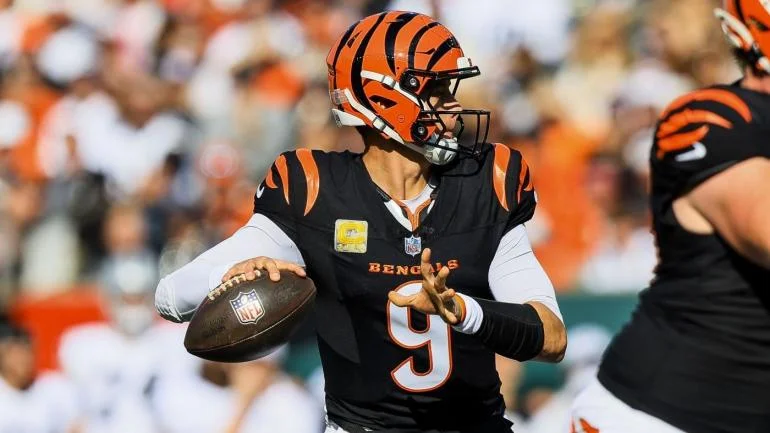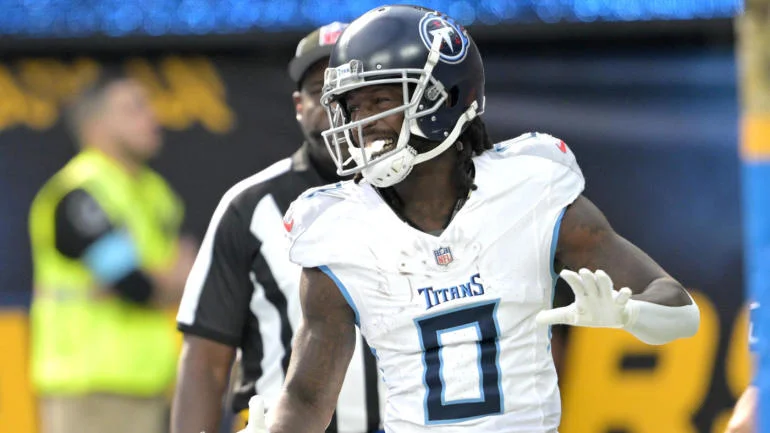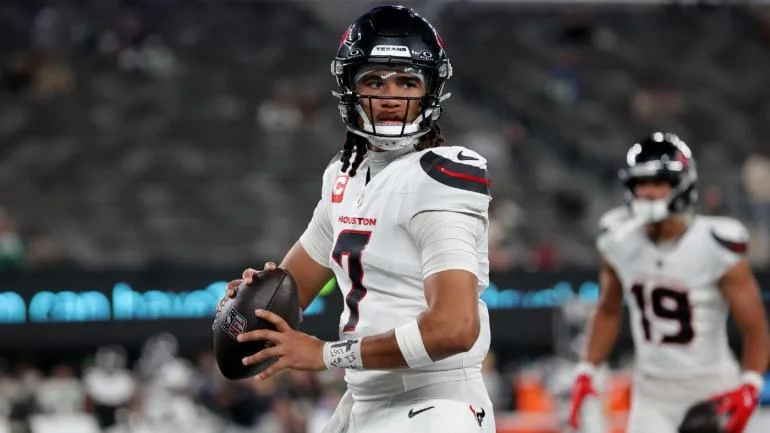It seemed a foregone conclusion: The Eagles would take a running back in the 2017 draft. Some fans wanted them to trade up for the blue-chip prospect Leonard Fournette. Others hoped Christian McCaffrey or Dalvin Cook would still be available in the first or second rounds. A sparing few, like myself, hoped Kareem Hunt or Jamaal Williams would be there in the third or fourth rounds, offering good value.
While the specific back desired was a matter of opinion, the thought was the same: The Eagles needed a bell cow, someone to carry a heavy load and take the pressure off of Carson Wentz. No one wanted to see him throw sixty-two times in a game again. Ever. It’s no secret that if Wentz is to take the next step, he needs some help from the running game.
This is the formula for success that Dallas followed last season. Dak Prescott was able to pick apart defenses in 2016 due in large part to the attention Ezekiel Elliott–their own bell cow back–garnered.
So there the Eagles were at draft time, ready and willing to commit to their quarterback, and thus to a new lead rusher. But they missed out. Fournette went fourth, McCaffrey eighth, and the Vikings traded up to nab Cook just before the Eagles pick in the second round. They passed on Hunt in the third, as well as Williams, and then did the same for James Connor and Wayne Gallman in the fourth.
The 2017 draft had long been thought to be inexorably deep at running back–and the Eagles had done the unthinkable: They’d missed out on all of them. Except for Donnel Pumphrey, of course, a player most analysts thought too similar to Darren Sproles to be an effective pick for the Eagles, and one who, on the surface, seems a bit of a consolation prize.
But Joe Douglas and Howie Roseman know what they’re doing, right? They’ve got to. After all, ESPN’s Lance Zierlein ranked the Eagles’ 2017 class as the best in the NFL
So what gives? Is Pumphrey’s effect nullified by the presence of a similar back in Sproles, or is there something about his game we’re just not seeing yet?
“…HE’S A LITTLE DOG WHO THINKS HE’S BIG.”
Anyone with a chihuahua or pomeranian has seen the battle stance: arched back, tail tucked between the legs, teeth bared, lips curled, eyes wide with sheer determination, a canine David looking for its Goliath.
And we’ve come to equate the bravery (or foolishness) of our teacup companions with the hubris of the overmatched athlete: Isaiah Thomas driving into the lane, Bartolo Colon smacking a home run, Shawn Bradley trying to defend Shaq in the post–but is this ability (or desire) to transcend one’s physical limitations a quantifiable skill? Or, better yet, does size even matter?
These might have been among the questions Howie Roseman and Joe Douglas asked themselves when they traded back up (after moving down) to pick 26 in the fourth round (132nd overall) of the 2017 NFL draft to select San Diego State Running Back Donnel Pumphrey, the all-time NCAA rushing leader with a whopping 6,405 yards rushed over his four years toting the rock in the Mountain West Conference.
At 5’ 8” and 176 pounds, Pumphrey is basically me with a personal trainer. Yes, he ran a 4.48 at the combine and had a 33” vertical jump (above average for division one college football players), but his size remained an issue for evaluators. How can a player weighing less than your average slot corner contend with the size, speed, and athleticism of NFL front sevens, let alone excel against them?
PUMPHREY’S ROLE
The easy, surface level NFL projection for Donnel Pumphrey is that of your traditional “scat back,” meaning one who is typically employed in passing downs as change-of-pace player, speedy and elusive but not terribly durable. Think of De’Anthony Thomas in Kansas City, Dion Lewis in New England, and of course Darren Sproles here in Philadelphia. The term is bordering on pejorative, as it carries the implication of a ceiling in this role. Dion Lewis is not carrying the ball 30 times a game. De’Anthony Thomas is not running the ball out of the I-formation. Scat a backs are useful, sometimes crucial players on a team, but they’re also notably limited in the role and rarely get the chance to prove otherwise.
So where does this leave Donnel Pumphrey?
THE SMALLEST THREE-DOWN BACK THAT EVER LIVED
An examination of Pumphrey’s college career shows the potential for much more than scat back limitations.If he were ice cream, he’d be a flavor like Rocky Road, a diverse experience, explosive and fun.
Pumphrey did everything for San Diego State. You don’t break the all-time NCAA rushing record as a mere third-down back, after all. He ran most often when the quarterback was under center and a fullback stood ahead, in the I formation.
https://streamable.com/xbwp9
Pumphrey’s spacial intelligence and superb vision and anticipation made him an ideal every-down player, consistently the driving force behind San Diego State’s success in marching the ball down the field. He averaged 6.0 yards per rush during his career there, and tallied over 16 touchdowns in each of his last three years.
https://streamable.com/h9ycg
Pumphrey also stayed in on obvious passing downs to chip a rusher off of the edge or-or protect his quarterback from the interior.
The ability to scrape off of chip on the defensive end and so quickly get into his stance and hand fight the linebacker into obsolescence would be remarkable for any back, let alone a Kevin Hart-sized one.
He rounded out his game with some flashes of receiving ability, averaging ten yards per reception in an offense with relatively limited opportunities for such.
https://streamable.com/ft634
This is what makes Pumphrey’s college production so compelling. Most of the time, coaches will have to scheme around players with limitations. Cordarrelle Patterson couldn’t run routes in Minnesota, so they tried to get the ball into his hands on reverses or other backfield actions. John Brown is undersized but has great speed, so Arizona did their best to get him downfield and avoid running him over the middle. But SD State made no such adjustments with Pumphrey. He ran the same plays Jamaal Williams (6’0”, 201) or Leonard Fournette (6’1”, 228) would have run, and carried an even larger load.
https://streamable.com/f617j
Of course, Pumphrey’s size wasn’t a complete non-factor. It sometimes showed up on plays where a clean lane for a first down opened up.
A back with more power should be able to drive the defender past the chains, here. But Pumphrey is swallowed up by a leg tackle.
Some evaluators fall in love with the idea of being attuned to details other evaluators most often miss. Danny Ainge is praised for hitting on the Isiah Thomas trade when most saw him as a bench piece at best (partly due to his size). The Cowboys are given their due credit for taking Dak Prescott in the fourth round and having the confidence to stick with him at starter instead of plugging in a veteran, as they did in previous years with Kyle Orton or John Kitna. But sometimes the longest view, smartest guy in the room strategy backfires (see the Robert Aguayo and Tavon Austin picks, or Chip Kelly’s 2015 offseason ). Whether or not Joe Douglas and Howie Roseman see Pumphrey as a sleeper bell cow or a mere scat-back is yet to be seen. What we do know is that Pumphrey has the every-down pedigree; he’s shown it on tape again and again. At a certain point, you have to believe the tape until the player proves otherwise. All that’s left now is to see what he can do against the best (and biggest) of the best.
IS VANILLA ICE CREAM WORTHLESS?
We live in a world where uniqueness is at the apex of an individual’s worth; being normal is boring. If we–as members of a society that reflects such–were to choose a running back to be most like, we’d choose a Christian McCaffrey, right? A guy that does a bit of everything, in his own unique way. Or maybe we’d choose to be, Leonard Fournette with his signature power, or Dalvin Cook with his outside speed. In many ways, evaluating players is so tedious that without a specific selling point–Kareem Hunt’s elusiveness or Joe Williams’ burst–it can be hard to get pumped up for a guy. It’s like standing in line for ice cream and being told all they’ve got is vanilla. You’re still gonna scarf it down, enjoy it even, but there’s nothing special about it, and if you had the choice, you’d probably go with something else.
Corey Clement is like vanilla ice cream. A classic back–good even, but boring. He has no distinctive moves. His speed is good but unremarkable, his elusiveness is relatively null, his power is just above average, and his size is standard. Watching him is like watching Tom Brady play quarterback except without the genius and success. Clement gets a three-yard gain here, four there, maybe a seven or eighter every so often. But does this blandness make him a bad prospect? And more importantly, does it doom his chances at seizing a roster spot?
The answer is no. In fact, the Eagles (and any team, for that matter) could use a guy like that.
Clement has every chance to be a Terrance West-type player. Boring–yes–but effective, the kind of guy you auto draft at the end of your fantasy draft only to start every week because of his surprising production. The guy who racks up sixty yards and a score almost every game.
Of course, this is Clement’s ceiling. He’s no burner. There’s a reason he wasn’t drafted. But there’s also a reason he’s the fifth-most archived player in DraftBreakdown’s 2017 class. Clement was productive in college, and he ran with enough burst, power, and elusiveness to at least be projectable to the next level. Of course there’s the caveat of Wisconsin having a historically high-caliber recruiting institution at the offensive line, devaluing any back that ran behind it as having his stats inflated (Ryan Ramczyk, first round selection of the Saints, was part of Clements weekly convoy). But that only tells a part of the story, just as the Dallas Cowboys’ line only tells part of the Ezekiel Elliott story.
Take all of this out of the equation, though, the o-line, the depth in the class, the conference, and the combine numbers, and Clement still proves to be a good prospect, someone who should challenge Wendell Smallwood, Pumphrey, and Sproles for a few carries each game.
DEATH AND TAXES
Clement’s game is surprisingly steady, something that can’t be said for every back in this class. His signature conservative gains are always there, like death and taxes.
A solid run is exactly why a vanilla running back can be valuable. First down gains of four yards and over are extremely useful in opening up a coach’s playbook. Clement is well equipped to excel in this role as a drive initiator. Second and long is death for a young quarterback like Carson Wentz. You want to stay ahead of the chains. This way, you can dictate to defenses what the game will be, instead of having to play catch up.
Clement also showed decent push, able to plow through the first defender to reach him, turning two yard gains into six yards. The Eagles really benefitted from this running style; their offense was most effective when Ryan Mathews was healthy and running with power (see the Falcons game, for example).
On top of this, Clement flashed some ability to bounce runs outside for big splash plays, though this happened less than it should have. Clement often saw the possibility for such runs a split second too late. His vision is adequate but inconsistent, and at its best still nothing too special.
Nevertheless it’s encouraging to see a run like this on tape against an average-to-good college defense. Evaluators want to see splash plays on tape, especially from guys like Clement.
But despite the positives, Clement offers too many runs like the one below. He’s not great in space, and often times is unable to make the one guy miss that would turn a bad run into a good one. This is perhaps the most important skill for a back in the NFL. If you can’t win one on one matchups, at any position, let alone offensive skill positions, your prospects for a successful career aren’t great.
https://streamable.com/1usxl
Hopefully the more spaced out style of NFL offenses helps Clement in this area. You’ll notice that in college Clement almost always rushed against at least a seven-man box. I’ve seen him get four or five yards consistently against nine men in the box. The way defenses played Wisconsin is an important factor when watching the tape. You don’t see teams selling out that hard against the run as often as they did against Clement and Wisconsin. That tells us that defensive coordinators game planned for him, and saw stopping him as crucial to their success. Wisconsin’s quarterback play was a non-factor during Clement’s tenure. The threat of an NFL passing game should help him out in the future.
I DRINK YOUR MILKSHAKE
In the wake of the Eagles decision to forego drafting a surefire bell cow back in the 2017 draft one thing is clear: Their rushing attack will–once again–be by committee.
The most important thing with this approach, then, is to find and establish complementary backs. You saw the success last year when the Eagles were able to switch back and forth between Ryan Mathews and Darren Sproles. Defenses weren’t able to maintain a rhythm, as the pace was so disparate and the styles were so different.
Donnel Pumphrey and Corey Clement could easily be the next iteration of this philosophy. With Pumphrey’s anticipation, speed, and elusiveness, and Clement’s straight-line style, the Eagles’ diversified attack could find marginal success against NFL defenses this season, especially considering the dimensional pressure Wentz’ (hopefully simpatico) connection with newcomer Alshon Jeffery will add to the offense. But for this plan to be successful, both Pumphrey and Clement will have to answer the big questions many evaluators have had about them for years, and answer them well. If they do, the Eagles might have just found a secret formula to a delicious milkshake: crunchy and savory with a base of traditional, smooth vanilla.




